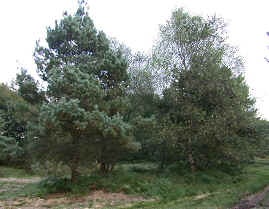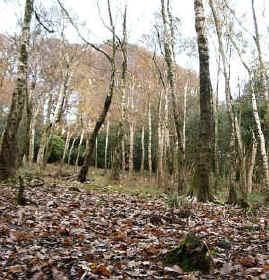Types of Broadleaf
Woodland - continued
previous
| ASH WOODLAND Ash is a tree which is particularly associated with limestone areas. The Undercliff, near Lyme Regis in Dorset, is a typical example of an Ash woodland, with the trees perched on steep limestone hillsides.
While Ash is not particularly favored by invertebrates, supporting only 41 different species (roughly one tenth of the number supported by Oak), it is rich in its lichen flora, supporting 255 different species of lichen. In areas suitable for the growth of Beech, Ash woods will often in time give way to a later succession of Beech woodland. However, in areas unsuitable for Beech, Ash may be the natural climax community of the area. BIRCH WOODLAND There are two common native species of Birch in Britain, Silver Birch, Betula pendula, and Downy Birch, Betula pubescens. Both species favor acid soils, with Silver Birch tending to occur on sandy, gravely soils, while Downy Birch prefers wetter soils and a cooler climate. Neither species is commonly found on chalk. The two species can often be found together in the same areas.
Birches are very hardy trees. They were among the first tree species to establish in Britain after the Ice Age retreated. They are therefore also one of the dominant woodland trees in the more extreme climate of Northern England and Scotland, together with other hardy natives such as Scots Pine and Rowan. Birch woods may have a very diverse invertebrate life as the trees will support over 300 different species of insects and mites. This in turn attracts a variety of birds, particularly willow warblers and chaffinches. Birch also has a number of fungi associated with it including Fly Agaric (the red toadstool with white spots of Fairy rings) and a variety of bracket fungi.
|
More on the area in Britain covered by
individual broadleaf species here


